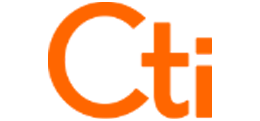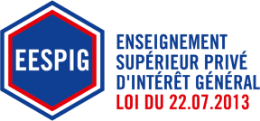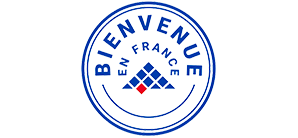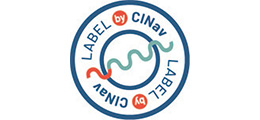Shipping Engineer
Diversification and energy management, innovative propulsion systems, comfort, air quality, digitalisation, intelligent and autonomous ships, pollution control, supply chains: the shipping industry is constantly changing and there are many areas for development. In all these areas, engineers play an essential role in facing the many challenges: they conduct ambitious projects in both design and production, organize and lead teams, develop surface and underwater vehicles of all sizes, and help to improve the environmental impact. The new shipping course meets a real need for expertise from companies in this sector.
From the preparatory cycle to fifth year: a curriculum to prepare for the shipping industry
Being a naval engineer means working on diversification and energy management, innovative propulsion systems, comfort, air quality, digitalisation, intelligent and autonomous ships, ocean depollution and the ship building supply chain. It may be technical management of a development programme, conducting tests, developing production methods, optimising quality processes, prospecting for and negotiating contracts.
The shipping training programme prepares for the major challenges facing the sector. It starts with the preparatory cycle. During these first 2 years, students are introduced to the main concepts in the shipping sector. During the 3-year engineering course, students carry out numerous application projects.
The + of shipping engineering
Industrial partners invested in the success of our students
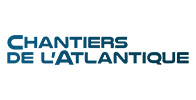
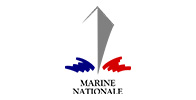
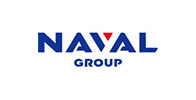
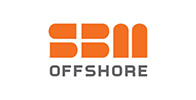
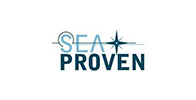
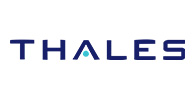
Rewarding academic, student or extra-curricular projects
WAVE Association: proposes many activities related to the nautical field and innovative maritime projects: design of all the propulsion and construction of the cockpit of a small solar-powered electric catamaran to take part in the Solar & Energy Boat Challenge in Monaco or the Green Turtle project, a robot turtle tracking marine waste.
The school’s sailing club, ESTACA Sailing proposes to introduce students to the world of sailing and allows them to practice their passion. It also has projects, notably the Kiteboat Speed, construction of a support towed by a kite wing and mounted on foils, all adapted for the practice of handisport.
Integrated preparatory cycle
- Sciences
- Transport engineering
- Human Sciences and Engineering Culture
- Professional experience
- Company internship (4 weeks)
- Sciences
- Transport engineering
- Human Sciences and Engineering Culture
- Professional experience
- Company internship (4 weeks)
Engineering cycle
- Sciences
- Transport engineering
- Human Sciences and Engineering Culture
- Professional experience
- Sciences
- Transport engineering
- Human Sciences and Engineering Culture
- Professional experience
- Trainee engineer internship (4 months)
- Transport engineering
- Professional experience
- End of study internship (6 months)
12 months of compulsory internships to learn about the shipping engineering
• Execution internship in 1st or 2nd year at Construction navale Bordeaux (CNB): work on optimisation of logistics flows.
• Engineering student internship in 4th year at Naval Group: site coordination on submarines nuclear.
• End-of-studies internship in 5th year at Yacht and Superyacht Research Group: research project aimed at gaining new insights into the fluid dynamics of high performance sailing yachts.
1st Year naval program - Integrated preparatory cycle
• Logic
• Calculus in R and C
• Geometry in plane and space
• Functions of one variable
• Sequences
• Polynomials
• Linear algebra
• Equations and differential systems
• Reference frames and reference points
• Coordinate systems
• Trajectories and equations of motion
• Point mechanics
• Schematic and analysis of links
• Technologies and operation of actuators
• CAD (SOLIDWORKS)
• Introduction to organic chemistry
• Reaction mechanisms (electronic, energetic and kinetic aspects)
• Alkanes, alkenes, alkynes and hydrocarbons
• Systems of units and homogeneity of equations
• Order of magnitude and error calculations
• Reminder of the rules of syntax
• Synthesis of documents
• Plan and structure of a report
• Covering letter, CV
• Interview techniques
• Practice in looking for an internship
• Involvement in the life of the School
• Knowledge of the company
2nd Year naval program - Integrated preparatory cycle
In 2nd year, students can already choose an option.
• Functions of several variables
• Vector analysis
• Integer series and Fourier series
• Laplace transforms and Fourier transforms
• Integral calculus
• Probability calculus
• Real random variables
• Usual discrete and continuous laws
• Central limited theorem and approximations
• Introduction to design
and object programming
• Project in C++
• Advanced Excel
• Traction / compression / torsion / bending
• Stresses and deformations
• Behavioral laws
• Analysis and design of beams
• Physical and mechanical properties
• Different types of materials
• Crystallography
• Kinematics of fluids
• Dynamics of perfect and viscous fluids
• Pressure losses
• Study of combustion characteristics
• Free enthalpy
• Oxidation-reduction
• Simple, alkaline and fuel cells
• Modelling of systems (equation setting
and transfer functions)
• Elementary control loop
• Frequency study of systems
• Application under Matlab
• Periodic signals
• Functional approach (amplifiers and filters)
• Frequency responses
• Functional aspects of converters
• Rectifiers, transformers and DC machines
• Self-knowledge
• Responsibilities and ethics of the engineer
• Public speaking
• Involvement in the life of the School
• Knowledge of transport professions
• Introduction to issues, professions and methodology
3rd Year naval program - Engineering cycle
3rd year marks the start of the engineering cycle. The option must be confirmed by the student.
• Isostatism of a mechanism, analysis, determination
and functional incidence
• Theory of contact between solids
• Dimensioning of guiding, assembly and power transmission elements
• Introduction to fatigue
• Introduction to various modes of heat transfer
• Conduction (heat equation, stationary and variable regimes)
• Convection
• Radiation
• Analysis of periodic signals
• Energy and power of signals
• Analog to digital conversion
• Introduction to digital filtering
• Energetics of Systems
• Virtual powers and Lagrange equations
• Vibration Analysis
• Fluid Dynamics
• Dimensional analysis and similarity
• Boundary layer study (laminar and turbulent)
• Power electronics
• Electromechanical conversion (energy balance)
• Structure and principle of electrical machines (synchronous and asynchronous)
• Applications to electric motors and converters
• Logic functions
• Combinatorial and sequential circuits
• Introduction to information transmission
• State of energy resources around the world and in France
• Macro- and micro-economic analysis of raw material dependency
• Applications to the transport of the future
• Linear systems
• Interpolation, approximation and integration
• Ordinary differential equations (explicit and implicit methods)
• Partial differential equations (finite differences)
• Model complexity analysis
• Parameter analysis and sizing
• Programming, validation and optimization
• Introduction to UML
• Static and dynamic UML diagrams
• Application development
• Introduction to project management
• Functional and technical analysis of the need (specs)
• Operating condition
• Application to product-process design
• Application to an innovative project
• General ship design
• Design of shapes and profiles, links with hydrodynamics
• Lift, physical limitation according to sea state
• Hulls, foils
• Links with architecture
• Design
• Stability study
• Underwater pressure
• Design of deep water hulls
• Sealing
• Software design applied to the naval industry
• Connection between ships
• Transmissions
• Protocols
• Lift, drag, forces
• Friction
• Delamination
• Modeling, scale effects
• Propeller
• Fluid-structure interactions
• Group dynamics
• Involvement in the life of the School
• Intercultural communication
• Social networks
• Formalization of the career plan
• Issues of international mobility
4th Year naval program - Engineering cycle
• Meshing
• Energy approach and discretization of structure
• The different families of finite elements in structural calculation
• Calculation of elementary matrices, assembly and calculation of a static problem solution
• General assumptions of continuum mechanics
• Elastic, viscoelastic and thermoelastic laws of behavior
• Introduction to damage, fracture and fatigue
• Methods of solving elastic problems
• Introduction to vibration and acoustic phenomena
• Theoretical and experimental modal analysis
• Linear acoustics, acoustic modes and acoustic impedance
• Mass and energy balance in open systems
• Conversion of thermochemical energy into heat energy
• Conversion of thermochemical energy into mechanical – electrical energy
• Design of hydraulic system architectures
• Pressure loss modelling
• Power sizing
• Introduction to networks and components
• Coupling of mechanical, electrical, thermal and hydraulic models
• Multi-physics modeling tools
• Basic concepts of software architecture
• Task scheduling
• Synchronization and inter-task communication
• Coupling of mechanical, electrical, thermal and hydraulic models
• Multi-physics modeling tools
• Inverse model
• Control modeling of asynchronous and synchronous machines
• Specificity
• Stability
• Architecture
• Specific hydrodynamics
• Underwater propulsion
• Fire safety
• Acoustics and vibration
• Stabilizer
• Ecological impact, environment, regulations
• Air auality
• Design
• Certification, regulations, standards
• Energy storage
• Introduction to quality
• Control chart and process model
• Certification and customer relationship
• Statistical Inference (sampling and estimates)
• Statistical Process Control
• Experimental
• Introduction to the organization of industrial companies and their environment
• Production planning (concept of flow, stock management, needs calculation)
• Introduction to lean management
• Social relations in the company
• International project management
• Structuring a project into tasks and phases
• Business plan
5th Year naval program - Engineering cycle
5th year Naval options
One option of your choice.
• Generation of critical and non-critical models and functions
• Code generation
• Mechatronic systems: Multiphysics modeling, sensors, actuators
• Embedded computers and networks
• Environmental impact
• Modeling of energy systems
• Engines (emissions, pollution control, energy performance, etc.)
• Electrification
• Fuel cells
• Safety
• Acoustics and aerothermics
• Economic, regulatory and environmental context
• Systems engineering
• Rupture
• Fatigue
• Damage
• Modeling of thin elements
• Optimization of structures
• Outfitting




